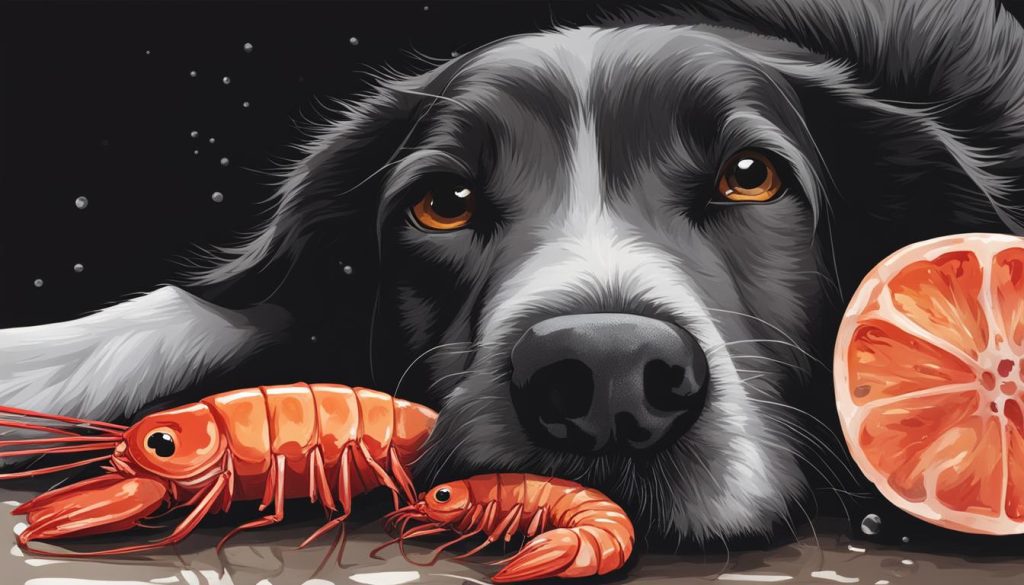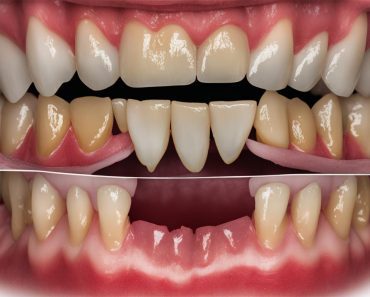Greetings, fellow pet lovers! Today, I wanted to delve into a hot topic that has been buzzing in the doggy world – can dogs eat shrimp? As a pet parent myself, I understand the importance of ensuring our four-legged friends are not only happy but also healthy. So, let’s dive right in and explore the world of shrimp and dogs!
Many of us enjoy indulging in seafood delicacies, and it’s natural to wonder if we can share a bite with our furry companions. Well, the answer is…yes and no. While dogs can indeed enjoy the occasional treat of shrimp, there are important considerations to keep in mind to ensure their well-being.
Shrimp can offer some potential benefits to dogs. They contain glucosamine, which supports joint health, as well as astaxanthin, an antioxidant that offers various benefits. Additionally, shrimp is a good source of taurine, an amino acid that supports heart, eye, brain, and immune system health. However, it’s crucial to approach feeding shrimp to dogs with caution.
Before serving shrimp to your pup, it’s essential to choose wild shrimp to avoid harmful chemicals present in farm-raised shrimp. Properly cooking the shrimp and removing the shells are also recommended to prevent choking hazards and bacterial infections. And remember, moderation is key! Consulting with a veterinarian or veterinary nutritionist can provide you with tailored advice for your dog’s specific dietary needs and any potential health concerns.
So, whether you’re considering dog-friendly seafood, looking for answers on shellfish safety, or simply wondering if shrimp can be a part of your dog’s diet, join me as we unravel the truth together in this informative article. Let’s ensure our furry friends get the best, while keeping them safe!
The Benefits and Risks of Shrimp for Dogs
Shrimp can offer several potential health benefits for dogs. This seafood is high in protein, low in calories, and rich in omega-3 fatty acids. Dogs can benefit from the vitamins present in shrimp, such as B12 and niacin, which are essential for various bodily functions.
Additionally, shrimp contains antioxidants that can help fight free radicals and reduce brain aging in dogs. These antioxidants, along with other nutrients in shrimp, contribute to the overall well-being of dogs and support their overall health.
However, it’s important to be aware of the risks associated with feeding shrimp to dogs. One major concern is the proper cooking of shrimp. Raw shrimp can contain harmful bacteria that can lead to gastrointestinal discomfort and other symptoms in dogs. It’s crucial to cook shrimp thoroughly before serving it to your furry friend.
Furthermore, some dogs may have allergies to shrimp, resulting in adverse reactions. It’s important to introduce shrimp to a dog’s diet with caution and observe any signs of allergies or sensitivities. If your dog shows any adverse reactions to shrimp, it’s best to consult with a veterinarian for guidance on how to proceed.
Conclusion:
Shrimp can provide several nutritional benefits for dogs, including protein, omega-3 fatty acids, and essential vitamins. However, it’s important to cook shrimp thoroughly and monitor for any signs of allergies or sensitivities in dogs. As with any new food, it’s best to introduce shrimp gradually and in moderation. Consulting with a veterinarian can provide personalized advice on incorporating shrimp into your dog’s diet and ensuring their overall health and well-being.

How Much Shrimp Can Dogs Eat?
When it comes to feeding shrimp to dogs, it’s important to consider the portion size and dietary considerations. The safe amount of shrimp for dogs to consume depends on factors such as their size, breed, and overall dietary needs. Portion control is crucial to prevent overfeeding and potential health issues, such as obesity.
As a general guideline, one or two pieces of shrimp are usually sufficient for most dogs. It’s important to remember that treats, including shrimp, should make up only a small percentage (around 10%) of a dog’s total diet. Calorie intake should be monitored to ensure a balanced and nutritious diet for dogs.
It’s also essential to be aware of any potential allergies a dog may have to shrimp. Introduce shrimp slowly into their diet and monitor for any adverse reactions. If a dog shows signs of an allergic reaction, such as itching, swelling, or difficulty breathing, it’s important to seek veterinary guidance immediately.
Dietary Considerations for Feeding Shrimp to Dogs
When incorporating shrimp into a dog’s diet, it’s important to keep in mind their overall health and well-being. Consulting with a veterinarian or veterinary nutritionist is recommended to determine the appropriate portion size and frequency of shrimp consumption for individual dogs.
Additionally, it’s essential to consider a dog’s specific dietary needs, such as their age, activity level, and any existing health conditions. A balanced diet that includes other essential nutrients, such as proteins, carbohydrates, and fats, is crucial for a dog’s overall health. Shrimp should be offered as an occasional treat rather than a staple food in a dog’s diet.
By taking into account portion size, dietary considerations, and potential allergies, dogs can safely enjoy the benefits of shrimp in moderation.
Safety Concerns: Can Dogs Eat Shrimp Tails?
When it comes to feeding your dog shrimp, it’s important to be aware of the potential risks associated with letting them consume the tails. While shrimp tails themselves are not toxic to dogs, they can pose several dangers. One of the main concerns is the risk of choking or damage to the digestive tract. Dogs who don’t thoroughly chew their food could be at a higher risk of swallowing shrimp tails whole, leading to blockages or other severe complications.
Additionally, shrimp tails can cause digestive issues and discomfort for dogs. The tails contain hard and sharp parts that may irritate the stomach lining or cause indigestion. Some dogs may experience vomiting, diarrhea, or abdominal pain after consuming shrimp tails. To ensure your dog’s safety and well-being, it’s best to remove the tails entirely before feeding them shrimp.

Reducing Choking Hazards and Digestive Problems
To prevent choking hazards and digestive issues, always make sure to remove the tails of shrimp before offering them to your dog. This simple step can help safeguard their health and ensure a worry-free snack or mealtime. By removing the tails, you eliminate the risk of your dog accidentally swallowing them whole or experiencing discomfort from the sharp parts.
It’s also worth noting that when introducing shrimp to your dog’s diet, it’s essential to do so gradually and in moderation. Even without the tails, shrimp should be treated as an occasional treat rather than a staple food. Consulting with a veterinarian or veterinary nutritionist can provide you with valuable guidance on portion sizes, frequency, and any specific dietary considerations for your dog.
Remember, your dog’s well-being is a top priority, so it’s crucial to be mindful of their safety when feeding them shrimp or any other food. Taking these precautions and seeking professional advice will help ensure that your furry friend can enjoy the occasional shrimp treat without any unwanted consequences.
Other Seafood and Foods for Dogs
Aside from shrimp, there are a few other seafood options that are safe and healthy for dogs to enjoy. Some of these include crab, lobster, and various types of fish like salmon and tuna (with the bones removed). Just like with shrimp, it’s important to remove any shells and ensure that the seafood is properly cooked to eliminate potential risks. These additional seafood options can provide dogs with protein, omega-3 fatty acids, and essential vitamins and minerals.
But seafood is not the only human food that can be safely incorporated into a dog’s diet. Several fruits can be a delicious and nutritious treat for our furry friends. Bananas, melons, apples, and berries are all safe choices for dogs, providing them with vitamins, antioxidants, and natural sugars. And when it comes to vegetables, carrots, spinach, and green beans are excellent options. These veggies are packed with essential nutrients and can be served steamed or raw, depending on your dog’s preference.
Safe seafood for dogs:
- Crab
- Lobster
- Salmon
- Tuna (with bones removed)
Fruits for dogs:
- Bananas
- Melons
- Apples
- Berries
Vegetables for dogs:
- Carrots
- Spinach
- Green beans
Furthermore, some types of beans are safe for dogs to consume in moderation. Chickpeas, black beans, and kidney beans are excellent sources of protein and fiber. Nuts can also be a healthy addition to a dog’s diet, but not all nuts are safe. Avoid macadamia nuts and walnuts, as they can be toxic to dogs. Just remember to give nuts in small quantities, as they are high in fat and calories.
When incorporating any new food into your dog’s diet, it’s important to do so gradually and monitor their reaction. Every dog is different, and while these foods are generally safe, individual allergies and sensitivities can vary. If you have any concerns or questions about your dog’s diet, it’s always a good idea to consult with a veterinarian to ensure the safety and balance of their meals. Our furry friends deserve the best, and by offering them a variety of safe and healthy foods, we can contribute to their overall well-being.
Conclusion: Shrimp as an Occasional Treat for Dogs
Incorporating shrimp into a dog’s diet can be a delightful occasional treat. As I’ve discussed, shrimp offers various potential benefits, such as joint support, antioxidant properties, and taurine for heart and immune health. However, it’s crucial to ensure safety and moderation when feeding shrimp to dogs.
To incorporate shrimp into a dog’s diet, it’s important to choose wild shrimp to avoid harmful chemicals. Thoroughly cooking the shrimp and removing the shells is essential to prevent choking hazards and bacterial infections. Remember, moderation is key. Considering a dog’s overall diet, portion sizes, and any potential allergies or health concerns is vital.
If you’re unsure about incorporating shrimp into your dog’s diet, consulting a veterinarian or veterinary nutritionist is always a wise choice. They can provide specific advice tailored to your dog’s needs, ensuring a safe and appropriate inclusion of shrimp as an occasional treat.
FAQ
Can dogs eat shrimp?
Yes, dogs can eat shrimp, but it’s important to take precautions and consider certain factors when feeding them this seafood.
What are the benefits and risks of shrimp for dogs?
Shrimp can provide health benefits for dogs, such as joint support, antioxidants, and taurine. However, there are risks associated with raw or improperly cooked shrimp, as well as potential allergies.
How much shrimp can dogs eat?
The amount of shrimp a dog can safely consume depends on factors such as their size, breed, and dietary needs. It’s important to introduce shrimp in moderation and consult with a veterinarian for specific advice.
Can dogs eat shrimp tails?
It is not recommended to let dogs eat shrimp tails due to the potential choking hazards and digestive issues they can cause. It’s best to remove the tails entirely before feeding shrimp to dogs.
What are some other safe seafood and foods for dogs?
Other safe seafood options for dogs include crab, lobster, and certain types of fish (with bones removed). Additionally, fruits, vegetables, beans, and certain nuts can be incorporated into a dog’s diet, but it’s important to avoid toxic options and consult with a veterinarian.






